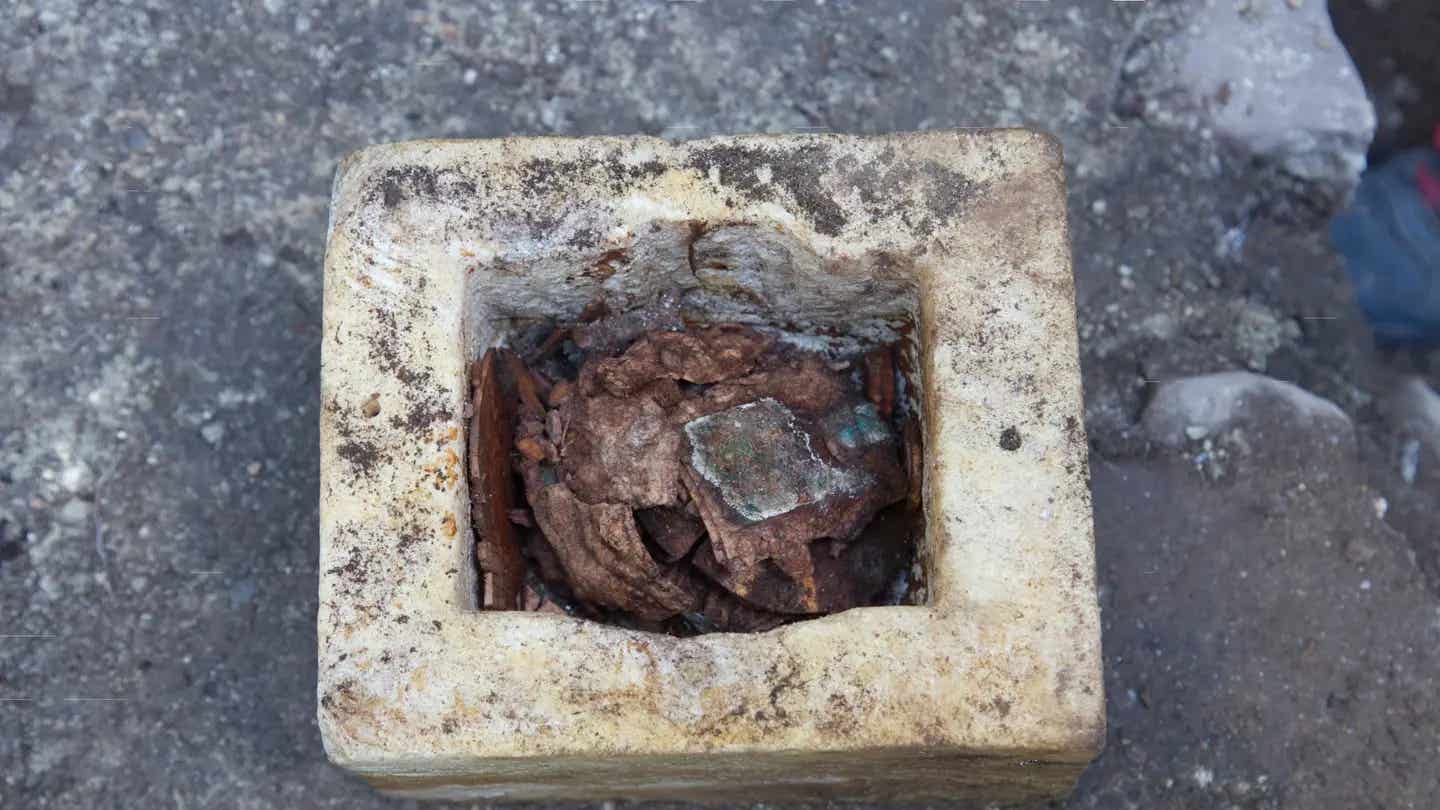1,500 year-old relic linked to Moses and the Ten Commandments
The shrine, found under an altar in a chapel at the summit of Burgbichl hill in Irschen, Austria, contained a 1,500-year-old ivory box adorned with Christian motifs.

The marble shrine was found by Innsbrook University archaeologists in Austria, with fragments of the ivory pyx stacked inside. (CREDIT: University of Innsbruck)
Archaeologists excavating a church site have made a significant discovery: a marble shrine that may be linked to the biblical event of Moses receiving the Ten Commandments.
The shrine, found under an altar in a chapel at the summit of Burgbichl hill in Irschen, Austria, contained a 1,500-year-old ivory box adorned with Christian motifs. This remarkable find was announced by the team from Innsbruck University, which has been conducting excavations in Irschen since 2016.
"We know of around 40 ivory boxes of this kind worldwide," stated Gerald Grabherr, the lead archaeologist. "The last time one was found during excavations was about 100 years ago. The few pyxes that exist are either preserved in cathedral treasures or exhibited in museums."
The motifs on the box are particularly intriguing. One depicts a man turning his head with a hand descending from the sky, placing something between his arms, followed by scenes of biblical figures. "This is the typical depiction of the handing over of the laws to Moses on Mount Sinai, the beginning of the covenant between God and man from the Old Testament," explained Grabherr.
Another motif shows a man in a chariot pulled by two horses, with the same hand from the sky lifting him into heaven. "We assume this is a depiction of the ascension of Christ, the fulfillment of the covenant with God. The depiction of scenes from the Old Testament alongside those from the New Testament is typical of late antiquity. However, the depiction of the Ascension of Christ with a two-horse chariot is very special and previously unknown," Grabherr noted.
The excavation has also unearthed two Christian churches, a cistern, and various personal belongings of the settlement's former inhabitants. Grabherr mentioned that towards the end of the Roman Empire, when times were more uncertain, settlers chose to live on easily defensible hilltops rather than in the valley.
Further investigations are being conducted into the origin of the ivory, as well as the metallic and wooden components found in the marble box. "The archaeological and art-historical significance of the pyx cannot be denied," Grabherr concluded.
Note: Materials provided above by the The Brighter Side of News. Content may be edited for style and length.
Like these kind of feel good stories? Get the Brighter Side of News' newsletter.
Rebecca Shavit
Science & Technology Journalist | Innovation Storyteller
Based in Los Angeles, Rebecca Shavit is a dedicated science and technology journalist who writes for The Brighter Side of News, an online publication committed to highlighting positive and transformative stories from around the world. With a passion for uncovering groundbreaking discoveries and innovations, she brings to light the scientific advancements shaping a better future. Her reporting spans a wide range of topics, from cutting-edge medical breakthroughs and artificial intelligence to green technology and space exploration. With a keen ability to translate complex concepts into engaging and accessible stories, she makes science and innovation relatable to a broad audience.



